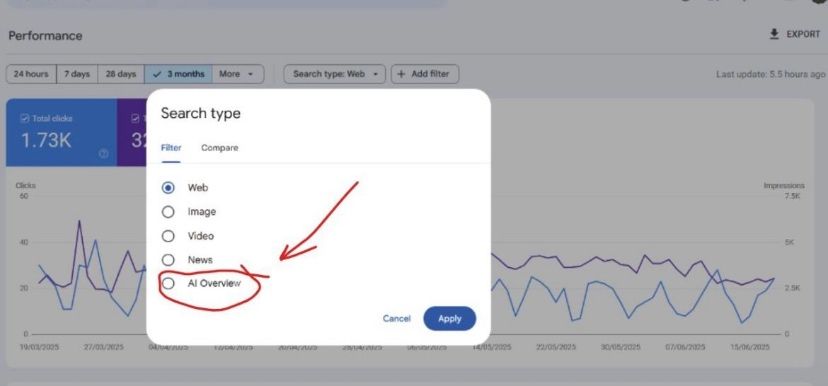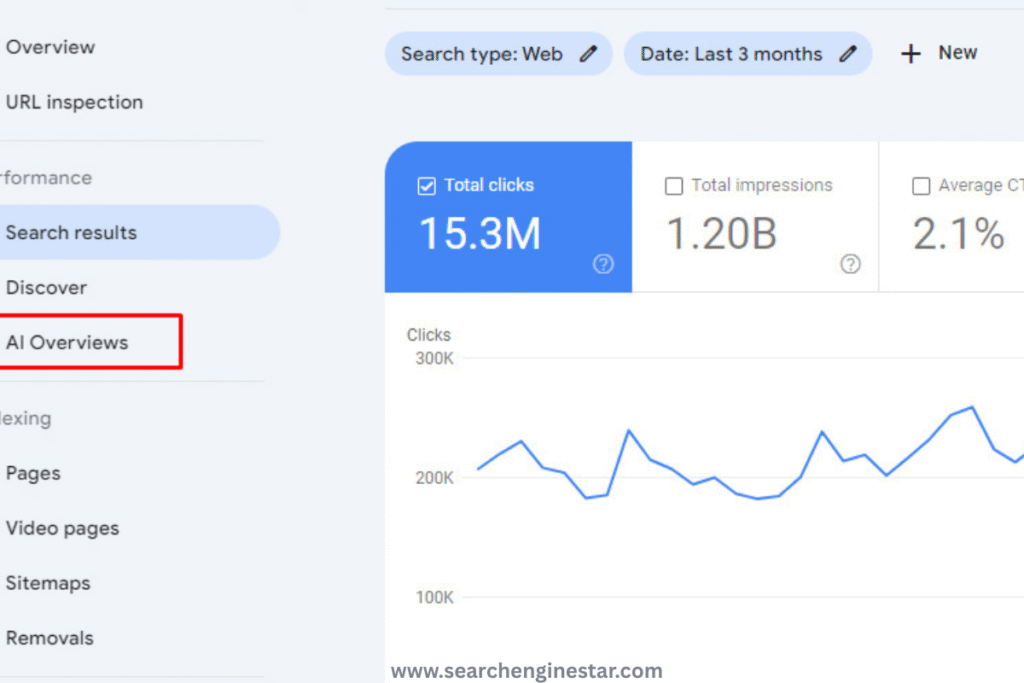Google just made a game-changing update to Search Console—you can now track AI Mode traffic, including impressions, clicks, and positions.
This update is a major step toward transparency in Google’s evolving AI-powered search results, especially as AI Overviews and AI Mode become a more prominent part of user experience on the SERP.
What’s New in Google Search Console?
A new “AI Overview” filter is being tested, and alongside it, AI Mode metrics are now counted in your Performance Report in GSC.
As of June 16, 2025, Google has confirmed that:
Clicks on external links in AI Mode now count as standard clicks.
Impressions are recorded if your webpage appears within an AI-powered response.
Positions are calculated similarly to regular organic listings.
You’ll find this update reflected in your total performance data, although Google has not introduced a separate AI Mode filter for detailed breakdowns yet—unlike the AI Overview test filter spotted recently (see screenshot below 👇).
How AI Mode Traffic Gets Tracked
According to Google’s updated Search Console Help Doc, here’s how metrics work in AI Mode:
Click: A user clicking on a link to your site from AI Mode counts as a click.
Impression: If your page appears in the AI-powered response, it counts as an impression.
Position: AI Mode uses the same ranking methodology as standard search results. Each module (e.g., carousel, image block, or text card) is ranked separately based on typical search rules.
Importantly, follow-up questions in AI Mode are treated as entirely new searches. So every click, impression, and position from those deeper interactions gets logged under a new query.
Why This Matters for SEOs
Until now, one of the biggest challenges SEOs faced was the lack of visibility into how Google’s AI-powered experiences impact organic traffic. With this update, we’re finally able to measure whether and how our content is featured in AI-generated summaries and interactive experiences.

However, Google still doesn’t allow SEOs to filter specifically for AI Mode clicks or impressions. You’ll see the data aggregated into your overall performance metrics.
But the separate AI Overview filter being tested could signal what’s coming—more granular insight into AI-driven traffic.
What You Should Do Next
Monitor your GSC Performance Report for changes in total impressions and clicks, especially if you target informational queries.
Prepare for a new wave of AI-first SEO, optimizing not just for blue links, but for visibility in AI-generated answers.
Watch for the full rollout of AI Overview filters—we’ll be sharing updates and strategies as they evolve.
At Search Engine Star, we’re already adapting our SEO strategies for this shift. If you’re serious about future-proofing your rankings, now is the time to align with how AI search works.
Final Thoughts
AI Mode Traffic and AI Overviews represent a new frontier in search—more interactive, personalized, and generative. With reporting finally making its way into GSC, SEOs can start making smarter decisions backed by data.
Stay ahead. Stay optimized. And get ready for the AI-first search experience.
Need help optimizing for AI Overviews or Google’s evolving SERP?
Talk to Search Engine Star — We specialize in AI SEO, on-page optimization, and future-ready strategies.

Joseph is an SEO Specialist and the founder of Search Engine Star, a results-driven SEO agency dedicated to helping businesses boost visibility, rank higher, and grow through smart search strategies. With years of experience in eCommerce SEO, AI-driven optimization, and SEO copywriting, Joseph has helped brands increase organic traffic and secure top spots in Google’s AI Overviews and featured snippets.

